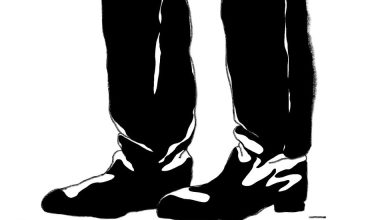Music Too Fast for Feet

It was Friday night, and the clubgoers at the Sputnikhalle nightclub in Münster, Germany, were primed to go hard. Decked out in black clothes and sunglasses, despite the dim light, the young crowd chanted the name of Héctor Oaks, a Spanish D.J., as he began playing his signature muscular, fast techno. Standing on top of the club’s risers, the crowd barely tried to keep up with the beat. Instead of moving their legs, many just oscillated their hips.
Neele Hoyer, 21, a college student attending the event, explained that most other German techno fans of her age had developed affinity for such breathless music. “It’s gone totally mainstream,” she said. Dancing to such a fast beat, could sometimes be strenuous, she added, but “this is what’s normal to us.”
In recent years, Oaks, 32, has become a prominent figure in a broader trend in electronic music. While conventional techno is often played at around 120 to 130 beats per minute, Oaks and other D.J.s often play at 145 or above. The resulting hard-charging, breakneck sound has become the defining sound of Europe’s dance floors since the lockdown phase of the pandemic.
Although fast electronic music is not new, its broader dominance is. A data analysis by the German public broadcaster RBB this summer found that the top electronic music tracks of 2022 had much faster tempos than similar songs in 2016. Specialist dance music publications like Mixmag and Beatportal have noted the trend, and many of the buzzy D.J.s of the moment, like Ukraine’s Daria Kolosova and the Polish D.J. VTSS, are known for cranking up the speed.
“I see it everywhere,” said Casper Tielrooij, the founder of Dekmantel, a label and annual electronic music festival in Amsterdam. “It’s not only techno, but jungle and trance and drum and bass.” He argued that although the zeitgeist had started to change before Covid, the faster, harder genre of techno had “exploded during the pandemic” and tastes were partly being shaped by young people who had spent their late teens or early twenties in lockdown.
Luigi Di Venere, a techno and house D.J. who often plays at Berghain, the Berlin techno club, said that “there’s this idea that they need to speed things up to make up for it, and in case it happens again.” He added that the less “organic” and more “robotic” fast music suited a generation of clubgoers more connected to online culture.
He argued that the brisk sound is partly sustained by a kind of feedback loop: As some D.J.s play faster, their co-headliners imitate their style to keep up the energy in the club. “You can’t just be a grandma and go, ‘Tra-la-la, 120 B.P.M.,’” he said, adding that he believed the trend still hasn’t reached its peak.
In an interview, Oaks said that he began developing his sound in 2013, by melding traditional techno sets with other genres, including trance. Music played at a higher speed, he said, causes dancers’ hips, rather than their feet, to resonate, fostering a movement more akin to hovering than dancing. “I’ve thought about this a lot,” he added.
He recalled that the music he played was an outlier on the European club scene a decade ago. But he partly grew a following at Herrensauna, a Berlin-based queer party known for its harder sound. The Herrensauna D.J.s’ 2018 appearance on the influential Boiler Room platform, which hosts livestreamed sets, was a “turning point” for his kind of music, he said. “After that, you could see everything switched.”
The style’s success was likely fueled by other developments, including the proliferation of online D.J. streams, like Hör, during the pandemic’s lockdowns. According to Di Venere, because these streams were often shorter than normal club sets, D.J.s were pushed to squeeze in as much energy as possible, and the high-octane results became a staple at Europe’s illegal pandemic-era raves.
Since coronavirus-prevention measures were relaxed last year, the sound has now transitioned to the continent’s clubs, including in smaller cities like Münster, which has a population of around 300,000. Oaks is now regularly booked at venues in Ibiza, for instance, which were previously known for their softer, warmer sound.
Tahliah Simumba, 25, a Scottish musician who D.J.s as TAAHLIAH, grew her following during the pandemic with pop-inflected sets that often culminated at 170 B.P.M. In a recent phone interview, she said that TikTok, the video app, has been crucial in shaping post-pandemic club culture. The app, which focuses on snappy clips, has a large user base of techno fans, and its short videos favor fast-paced music.
She added that, as a younger D.J. raised in an online environment, her sound was largely developed in isolation from the dance floor. “I try not to be held back by hierarchical idea of what D.J.ing is,” she said. “I want to be having as much fun as possible, and what is D.J.ing, after all, other than playing music you like?”



